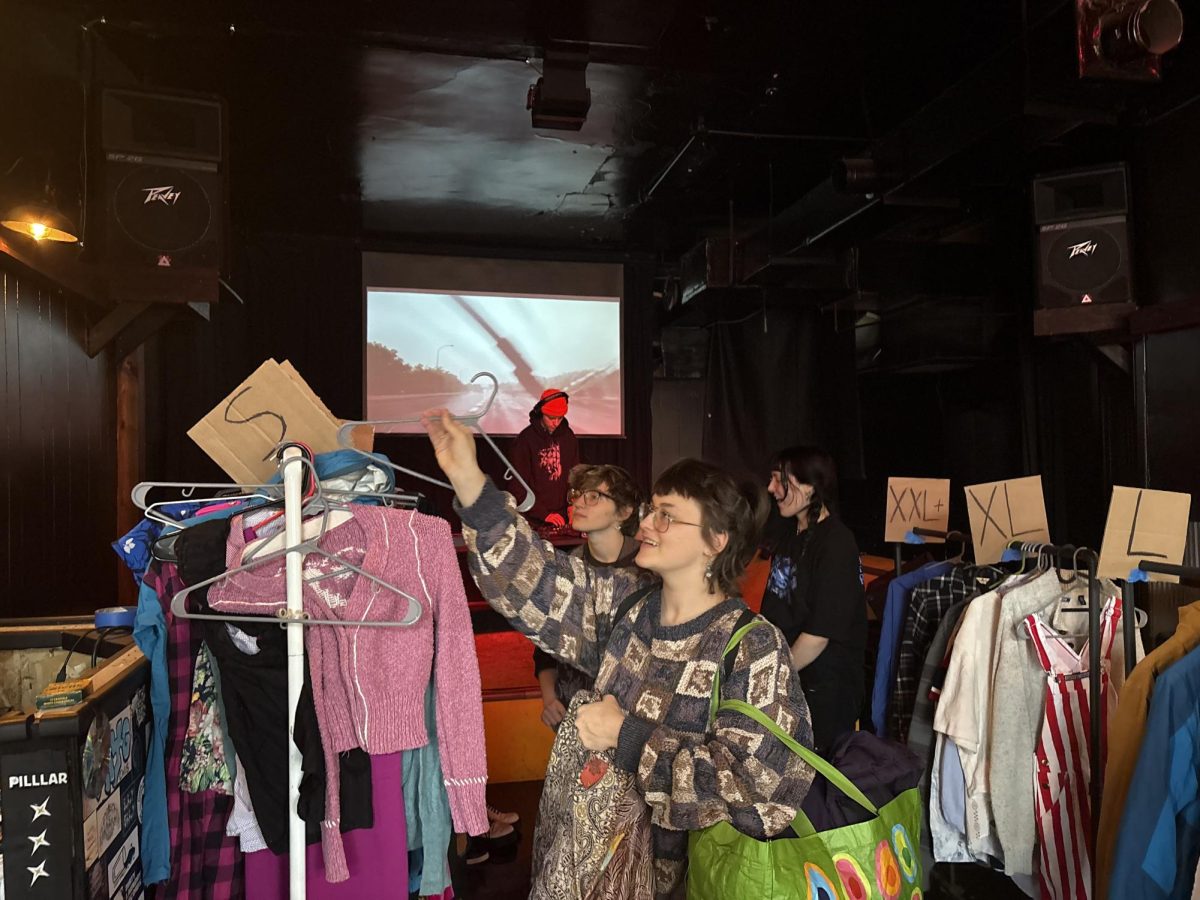For most Twin Cities residents, North Minneapolis is known for its higher crime levels, gang violence and drug trafficking.
Some long-time residents, like George Roberts, want to change that perception.
Roberts, who has lived in the area for almost 40 years, said he formed Homewood Studios to show that the area also holds over 300 artists.
Homewood Studios seeks to incorporate the past with the present, affluence with poverty, art with the sometimes harsh reality of living in the area.
“Sheltering Home Chronicles: How I See It,” the studio’s latest exhibit, exemplifies these goals. The photography exhibit blends the professional artwork of Wing Young Heui with that of homeless youth.
“Sheltering Home Chronicles” also works to draw parallels between the past and the present, through displaying historic photographs of the area on one side of the room and recent photographs on the other.
Project Director Kate Searls found inspiration while volunteering at Avenues for Homeless Youth, a North Minneapolis homeless shelter specifically for young adults.
Back in the days when North Minneapolis was home to a predominately Jewish population, the building housed the Jewish Sheltering Home for Children.
Searls started her research about three years ago by locating some of the former residents of the building and recording their oral histories.
One such resident, Shirley Rothstein, has remained close to Searls. Rothstein lived in the building as a young girl. She is now 83.
By showing photos and other documents from the Jewish
Sheltering Home, the exhibit hints at the area’s history as a middle-class Jewish neighborhood.
As the middle class moved into the suburbs, poverty and drugs crept into the neighborhood. The recent photographs reflect the
diversity in the area and the struggle for the teens to stay sober, out of gangs and off the streets.
Searls saw interesting parallels and differences between the two eras of the building.
“The community came in to support a family through a difficult time. Now, the county comes in only after the family fails. We hold back our support until the family fails, and then we separate the children from their parents and the siblings from one another,” Searls said.
In the Jewish community of North Minneapolis’ past, keeping siblings together and allowing parents to visit their children regularly was important.
For example, Rothstein was able to leave the home to visit her father on the weekends.
“Sheltering Home Chronicles: How I See It”
WHEN: 5- 9 p.m. Tuesday, 1-6 p.m. Wednesday and Friday, 1-4 p.m. Saturday, through Nov. 10
WHERE: Homewood Studios, 2400 Plymouth Ave. N., Minneapolis
TICKETS: Open and free to the public, (612) 587-0230
The photographs that blanket the walls of Homewood’s gallery are a mixture of Huie’s photographs of the young adults and photographs taken by the youth.
Huie worked on two workshops with the Avenue’s residents. Each meeting was a different assignment for the youth, from self-portraits to their future goals.
The exhibit blends the recent photographs with black-and-white photographs from the Jewish Sheltering Home.
The most enthralling part of the exhibit is seeing the similarities in two groups of people that, at first, appear to be very different. Photographs of the large, pregnant belly of one of the building’s current residents are within a few feet of a formal portrait of the home’s residents during the 1930s. The photographs show that life in the shelter is not one-dimensional; there is joy and hope mixed with sorrow and struggle.
The exhibit’s opening reception was equally diverse. Former Jewish residents of the home and current residents mingled with those from the Jewish community, the art community and North Minneapolis residents.
Searls said the exhibit does not represent the culmination of the project. She hopes to have a larger, more extensive exhibit at the Hennepin Historical Society in 2007 or 2008.
However, since the exhibit is free and the group is nonprofit, budget concerns threaten the future of the project.
Searls, a modest middle-aged mother, shied away from making a direct plea for donations.
Rothstein, on the other hand, has learned that people don’t pick up on subtle hints.
“We need gelt,” she said, using the Yiddish word for money. Searls smiled and nodded her head.







